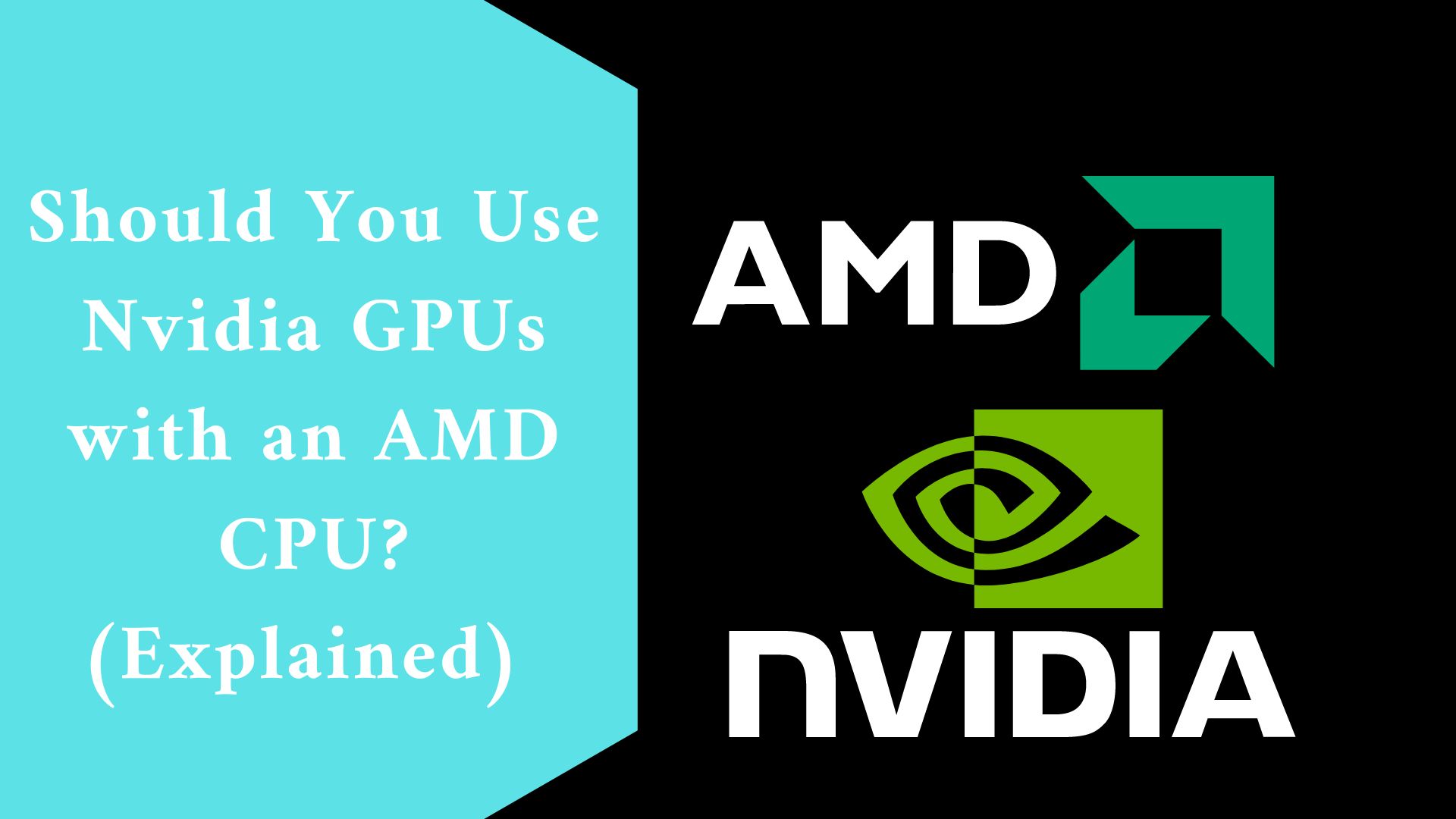AMD is the only manufacturer of PC components that produces both CPUs and dedicated graphics cards for the mainstream PC market. However, when it comes to GPUs, many people choose Nvidia.
Despite AMD’s recent release of the RDNA 2 Radeon RX 6000 line of graphics cards, many consider Nvidia to be the superior Graphics Card vendor.
In terms of CPUs, however, AMD’s Zen 3 Ryzen processors are currently more popular than Intel’s CPUs and are gaining market share by the day.
As a result, many PC builders will naturally explore teaming an AMD CPU with an Nvidia GPU.
If you agree with this design decision, this article will go over the advantages and disadvantages of combining an AMD CPU with an Nvidia Graphics Card.
Is it possible to use Nvidia GPUs with AMD CPUs?
In a nutshell, the answer is an emphatic “yes.” AMD CPUs are compatible with both AMD and Nvidia dedicated graphics cards, and they work well together.
In other words, no performance issues will be encountered with this configuration.
That being said, there are certain intrinsic benefits to the synergy found between central and graphics processors manufactured by the same company.
Whether or whether these advantages outweigh the utility of Nvidia’s proprietary technologies is dependent on your preferences and the goal of your project.
The advantage to using AMD GPUs with AMD CPUs
Let’s go over the unique features of each option to help you balance the benefits and drawbacks of choosing an AMD or Nvidia GPU to accompany your AMD CPU.
AMD for Workstations and 3D Rendering
However, before delving into specifics, it should be noted that AMD’s GPUs are significantly more geared toward a gaming audience. As a result, their features are focused on increasing the number of frames per second (FPS) that the GPU can render.
Their ray-tracing capabilities are inferior to Nvidia’s 2nd generation RT cores, making them unsuitable for most professional 3D rendering tasks.
Furthermore, the shortage of CUDA cores means that many 3D Render Engines, such as Octane and Redshift, are inoperable on these GPUs. (- as at the time this article was written. Octane and Redshift are both developing AMD GPU compatibility.)
Furthermore, when it comes to content creation and professional editing tasks, AMD GPUs fall far short of their Nvidia equivalents.
When it comes to GPU effects for DaVinci Resolve, Puget Systems benchmarks show the premium $999 Radeon RX 6900 XT lagging the $399 GeForce RTX 3060 Ti.
In terms of Unreal 4.26 ray tracing performance, it lags behind the previous generation GeForce RTX 2080 Ti.
Memory with Smart Access
AMD’s Smart Access Memory (SAM), which works only between RDNA2 GPUs and Zen 2 or Zen 3 CPUs, is an exclusive feature that requires both an AMD CPU and a GPU.
SAM creates an extended data channel that uses the CPU PCI Express lanes that the GPU already needs to function.
The CPU may access significantly larger temporary assets from the GPU’s VRAM thanks to the enhanced bandwidth provided by the PCIe link.
This practically results in a gain in gaming performance; but, depending on the title, this may also result in a drop in performance.
TechPowerUp discovered a 2% overall gain in relative performance for the Radeon RX 6800 XT across all resolutions after evaluating 22 different games.
Related video here ????????????
Nvidia’s Smart Access Memory Replacement
These concurrent, or full-scale, transfers from the GPU’s VRAM to the CPU over the bandwidth of PCI Express lanes are also referred to as rebar transfers (Resizable BAR).
Nvidia’s Resizable Bar feature supports both AMD and Intel (10th and 11th generation) CPUs, as well as AMD 400 series chipsets, which SAM does not.
However, rBAR is only compatible with Ryzen 5000 series CPUs and is thus incompatible with Zen 2 processors.
Another disadvantage is that it only currently supports 17 distinct gaming titles.
Drivers Open Source
If you are a Linux user who demands graphics-rendering Application Programming Interface (API) support, AMD’s GPUs are considerably superior to Nvidia’s.
Nvidia’s sole open-source driver (dubbed “NV”) was deprecated in 2010. AMD’s Catalyst, on the other hand, is up to date and widely available for both Windows and Linux computers.
Energy Conservation
If performance per Watt is vital for optimizing the productivity of your system, then specific AMD GPUs may be superior for your build.
According to Tom’s Hardware benchmarks, the RDNA2 Radeon RX 6000 series GPUs were more energy-efficient than comparable Nvidia GPUs.
Based on performance, the Radeon RX 6800 was shown to be the most power-efficient GPU in these testing.
One final thing to consider is the price of AMD’s GPUs in comparison to their Nvidia competitors.
AMD graphics cards can be found to be more cost-effective in many circumstances, depending on the model and task.
In terms of gaming performance, for example, the Radeon RX 6800 XT exceeds the GeForce RTX 3080 in terms of cost per frame at every resolution evaluated.
Is there any advantage to using Nvidia GPUs with Intel CPUs?
The answer to this question is, in general, no. The GPU’s performance will be the same whether paired with an AMD or Intel CPU.
Nonetheless, there is an argument to be made about which CPU and GPU combination is preferable to use, particularly for Artificial Intelligence performance optimization.
Nvidia’s Tensor Cores and Intel’s DL Boost deliver outstanding results for AI and machine learning applications.
Final thought
Finally, whether you have an AMD or Intel CPU makes little difference when it comes to selecting a GPU for your setup.
However, if you want to maximize your PC’s potential performance for a certain task, even minor benefits can add up.
AMD and Nvidia both offer excellent graphical processor options.
Nvidia has a huge advantage when it comes to 3D rendering and workstation builds. However, for dedicated gaming PCs, AMD provides peak 1080p and 1440p performance, particularly with the Radeon RX 6900 XT, as well as far higher cost-per-frame performance for 4K gaming.

